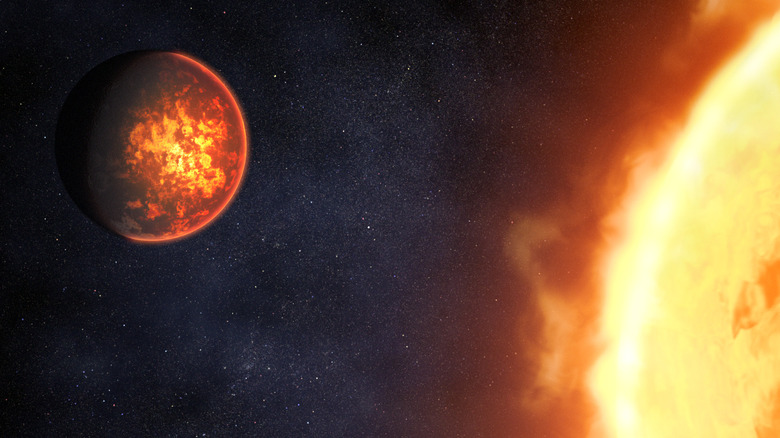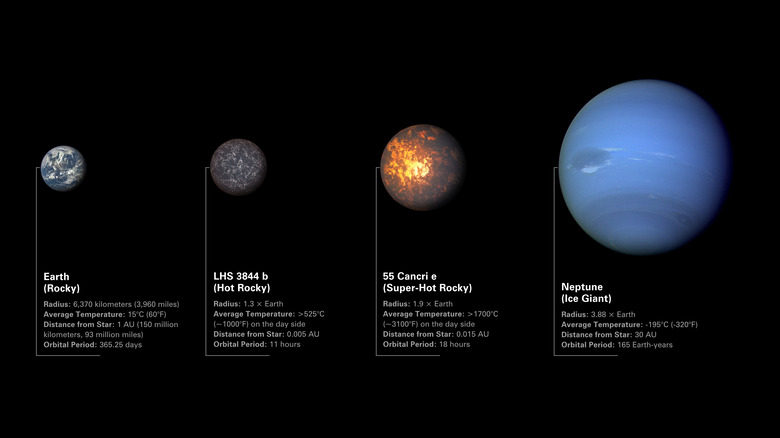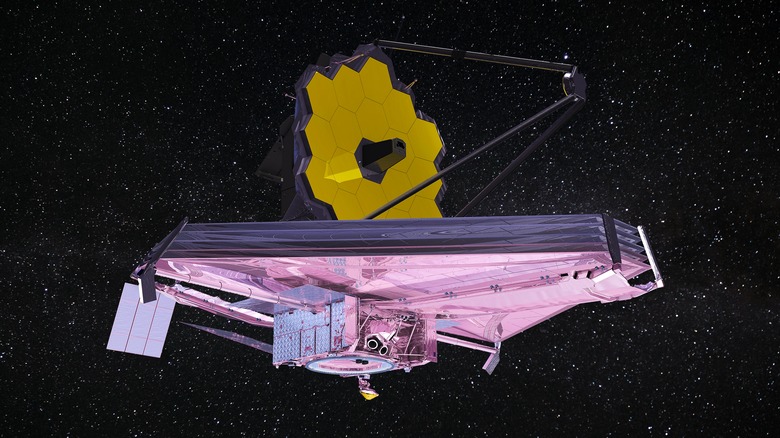How The James Webb Telescope Will Study A Lava-Covered Super-Earth
Astronomers from NASA, the European Space Agency, and research institutions around the world are preparing for the James Webb Space Telescope to begin science operations in summer 2022. Webb, which launched in December 2021, is the world's most powerful space telescope and is set to make huge waves in the study of astronomy by peering "back in time" at some of the most distant galaxies in the universe (via NASA).
But Webb won't only study galaxies and other objects like black holes — it will also change the study of exoplanets, which is the term used for planets outside of our solar system. Current missions like NASA's TESS or the now-retired Kepler Space Telescope discovered planets outside of our solar system, and the total number of exoplanets we know about now numbers in the thousands. However, for most of these planets, we have only basic data like their size or mass and how far they are from their host star. While this is interesting, and some information about the planets' environments like their surface temperature can be estimated, there is a lot we still have to learn about these far-off worlds.
That's where Webb comes in. The telescope is so powerful it will be able to learn more about many of these exoplanets, in particular about whether they have atmospheres and what these atmospheres are composed of (via NASA). Webb's exoplanet studies will include some strange, wild planets, including a lava-covered "super-Earth" and other rocky planets that are similar to Earth but much closer to their stars.
A hellish lava world
One of the exoplanets Webb will study is called 55 Cancri e; it has some Earth-like qualities but is super hot. This is a type of planet called a super-Earth, which means it is potentially rocky like Earth but is larger than our planet, though not as large as an ice giant like Neptune (via NASA). With an orbit of just 1.5 million miles from its star, which is 4% of the distance between Mercury and the sun, a year there lasts only 18 hours. That means the planet is up close and personal to its star, so it is extremely hot and is bombarded by radiation.
The planet is so hot on the surface, in fact, that the temperatures are high enough to melt rock. This makes researchers think the planet must be covered in oceans of lava as rocks are melted by the heat of the star. In addition, planets orbiting as close as 55 Cancri e is are thought to be tidally locked, meaning one side of the planet is always facing its star. Typically this side, called the dayside, will get much hotter than the side facing space, called the nightside. And strange weather phenomena can happen when there is a big difference in temperature between these two halves of the planet.
On the tidally-locked exoplanet WASP-121b, the temperature differences mean there could be clouds of metal and rain of liquid gems (via MPI). On 55 Cancri e, however, there is something odd going on, as readings using the Spitzer Space Telescope showed the hottest part of the planet doesn't seem to line up with the part facing the star.
A planetary puzzle
Researchers want to understand why the distribution of heat looks different than what they expected on this planet, and they will use James Webb to investigate. One option could be that the planet's atmosphere is moving around and carrying heat with it. "55 Cancri e could have a thick atmosphere dominated by oxygen or nitrogen," said one of the researchers who will use Webb to study the planet, Renyu Hu of NASA's Jet Propulsion Laboratory. "If it has an atmosphere, [Webb] has the sensitivity and wavelength range to detect it and determine what it is made of."
However, there's also another option: it could be that unlike other planets orbiting very close to their stars, 55 Cancri e is not actually tidally locked and could have a rotation pattern similar to Mercury, which rotates three times for every two times it passes around its star. This would mean it wouldn't have one side in perpetual daylight, but rather would have days and nights as Earth does. "That could explain why the hottest part of the planet is shifted," said another of the researchers, Alexis Brandeker of Stockholm University. "Just like on Earth, it would take time for the surface to heat up. The hottest time of the day would be in the afternoon, not right at noon."
This pattern of heating and cooling could have some amazing effects, like creating a rain of lava as rock melts and vaporizes during the day and then cools and condenses at night. To discover which of these theories is correct, James Webb will look closely at the planet using its Near-Infrared Camera (NIRCam) and Mid-Infrared Instrument (MIRI) instruments. By peering at its atmosphere, researchers should be able to learn which option is more likely.


